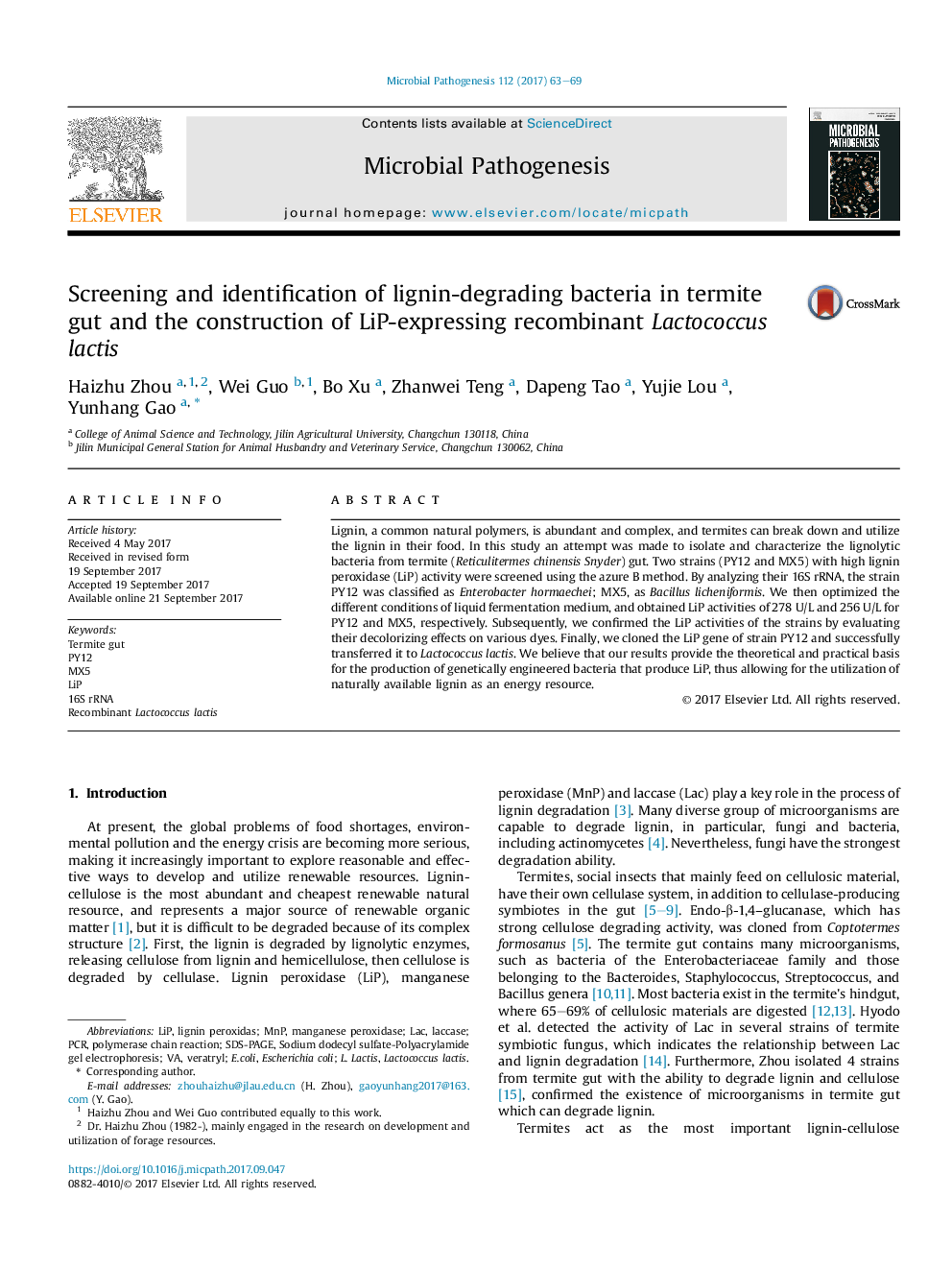| کد مقاله | کد نشریه | سال انتشار | مقاله انگلیسی | نسخه تمام متن |
|---|---|---|---|---|
| 5673506 | 1593677 | 2017 | 7 صفحه PDF | دانلود رایگان |
- Two strains (PY12 and MX5) with high lignin peroxidase (LiP) activity were screened and identified from termite gut.
- Fermentation conditions for producing LiP were optimized.
- LiP-expressing recombinant Lactococcus lactis was constructed.
Lignin, a common natural polymers, is abundant and complex, and termites can break down and utilize the lignin in their food. In this study an attempt was made to isolate and characterize the lignolytic bacteria from termite (Reticulitermes chinensis Snyder) gut. Two strains (PY12 and MX5) with high lignin peroxidase (LiP) activity were screened using the azure B method. By analyzing their 16S rRNA, the strain PY12 was classified as Enterobacter hormaechei; MX5, as Bacillus licheniformis. We then optimized the different conditions of liquid fermentation medium, and obtained LiP activities of 278 U/L and 256 U/L for PY12 and MX5, respectively. Subsequently, we confirmed the LiP activities of the strains by evaluating their decolorizing effects on various dyes. Finally, we cloned the LiP gene of strain PY12 and successfully transferred it to Lactococcus lactis. We believe that our results provide the theoretical and practical basis for the production of genetically engineered bacteria that produce LiP, thus allowing for the utilization of naturally available lignin as an energy resource.
Journal: Microbial Pathogenesis - Volume 112, November 2017, Pages 63-69
